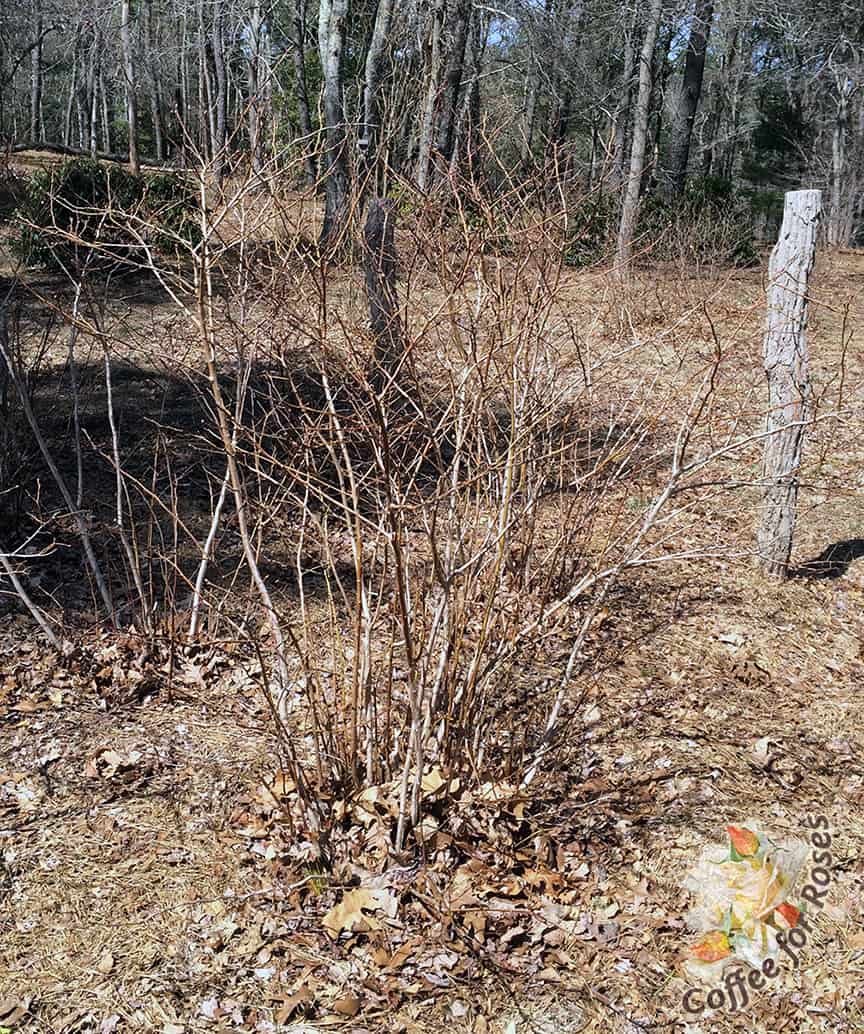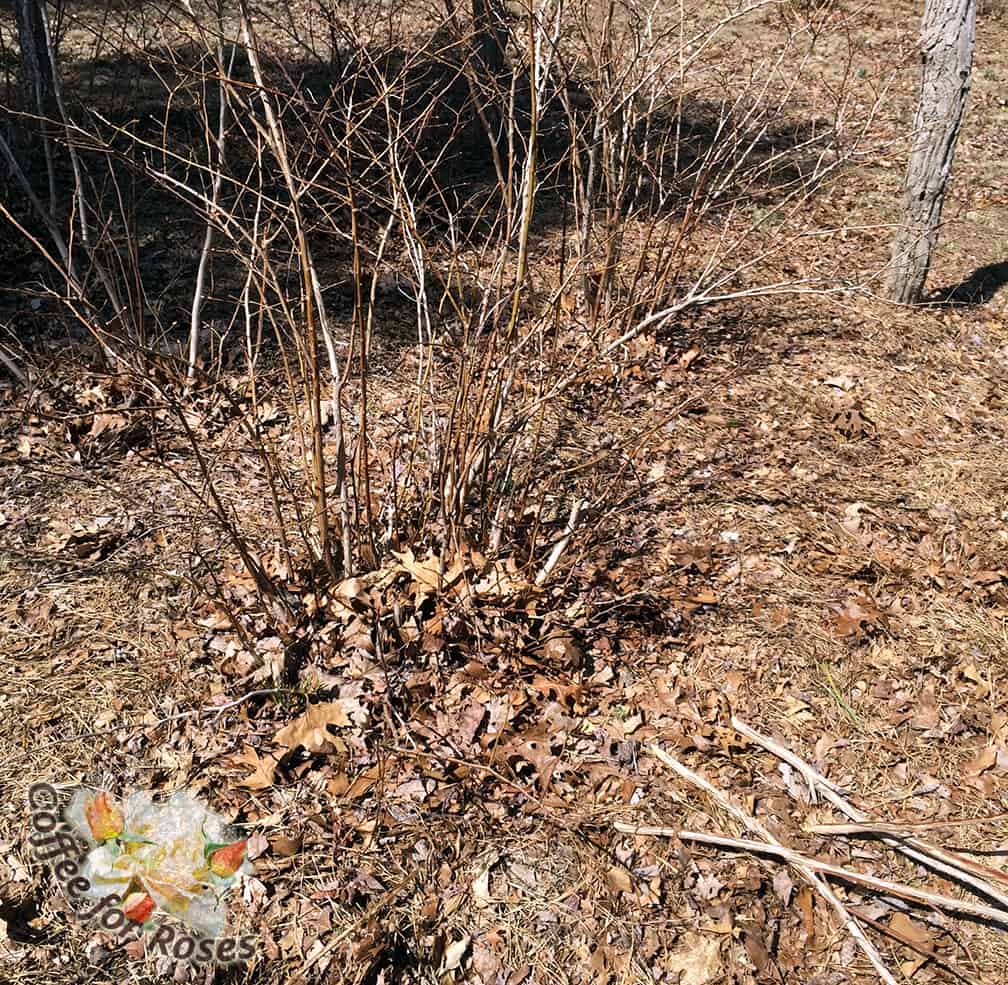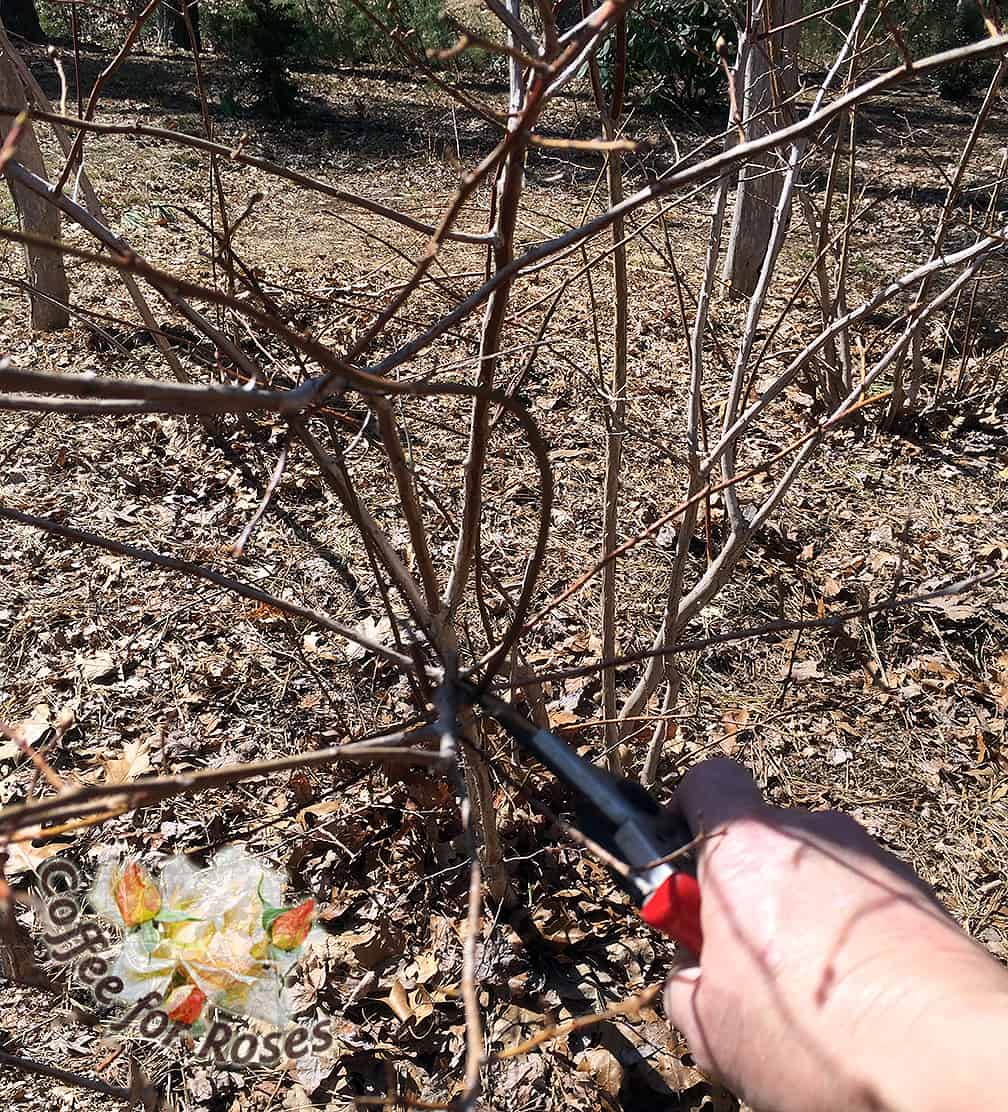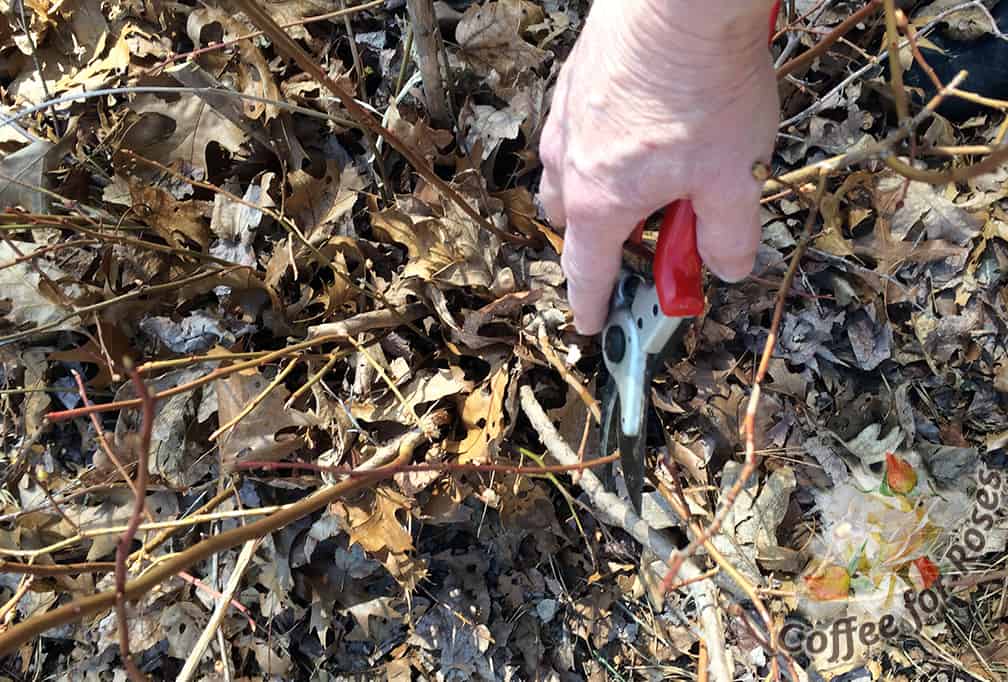Normally I prune Blueberries before they start to break dormancy. In the Northeast, this is usually in late March. This year, of course, there was over two feet of snow on the ground at that time so I only got out to prune my blueberries today, in mid-April. As gardeners we learn to be flexible if nothing else.
Pruning blueberries is good practice for life in general. It’s all about looking toward the future, taking action and ignoring our fears. If you want bumper crops of fruit you have to prune every spring even when most of your mind is screaming “WHAT? You’re going to take that much off? But there are flowers on that branch? Did you hear me, FLOWERS!”
Here’s the thing about blueberry bushes: the plants are the most productive if you stimulate new growth and what’s the best thing to promote that new growth? You guessed it: pruning.
The simple recipe for pruning blueberries is this:
1. First take off anything that’s dead. Dead is dead and there is no bringing it back, so get rid of those sticks/limbs/twigs right away.
2. Next look at the bottom of the plant and find the biggest, oldest canes. These are the ones that are light brown or tan/grey. You want to take out between a third to a half of these stems at or near ground level. Don’t look at the tops and say to yourself, “Oh but there are buds there and these could be berries.” That’s fear speaking, not the voice of future fruit production. Just focus on the bottom stems and cutting them, ignoring the tops, and you’ll be fine.
3. After those stems are cut with the lopers, use your pruners and remove any stems that are curved, weak or funky looking. Next take off any stems that are growing into the center of the plant instead of away from the center; these stems just make the shrub congested, not to mention less attractive, and they ultimately rub against other stems making wounds.
4. Lastly, find any crossed branches and remove one of them.
5. When you make the cuts above, prune down to where the stem you’re removing joins another – don’t just chop these twigs off mid-way.
6. Remember this (repeat as you cut if you have a hard time removing budded branches): “Pruning always stimulates new growth.” Always.

Here is the unpruned shrub. You can see in this photo that the older stems are not only thicker but more grey in color. There are seven on this shrub. You can also see that blueberries are a cane grower – that means they put up new branches/canes from the ground in response to pruning. So any cutting you do on these plants will result in new, fresh and stronger growth coming up from the roots.

On the ground you can see the main stems I cut out. Yes, they had buds on the top and would have made berries there. But if I don’t do this every year the plants will become less productive every year.

First cut out any dead wood and all broken branches. The twig that I’m cutting here was broken by the snow.

See how curved this branch is? It’s rubbing against other stems and this causes wounds where disease can enter. Always remove crossed branches and those that are funky shapes or going in odd directions.

Next, take out any stems or branches that are going into the center of the plant instead of out, away from the middle. This improves the shape as well as preventing crossed branches and interior congestion. Important note: see how I’m cutting this stem right next to the branch it joins? That’s a “thinning cut” and it’s the type of pruning you should be doing most often. It maintains the natural shape of the plant and doesn’t stimulate awkward growth just below the cut.

Finally, look for crossed branches and remove one of them. See how this small twig heads to the left and is rubbing against another stem? I take off the weaker, smaller and less well placed of the rubbing branches.
You’ll notice that I didn’t touch the tops of these plants at all. Once I cut out deadwood, a third of the oldest canes, crossed branches and anything weak or funky I was done pruning. This is because pruning is about improving appearance, and in this case fruit production, not controlling size. You can use this approach with many shrubs.



